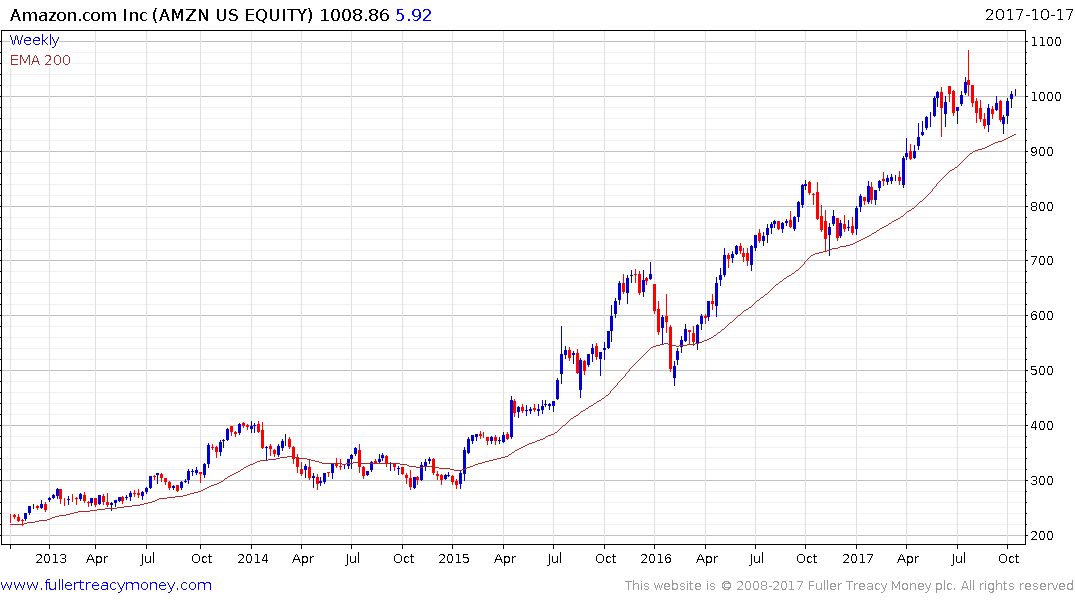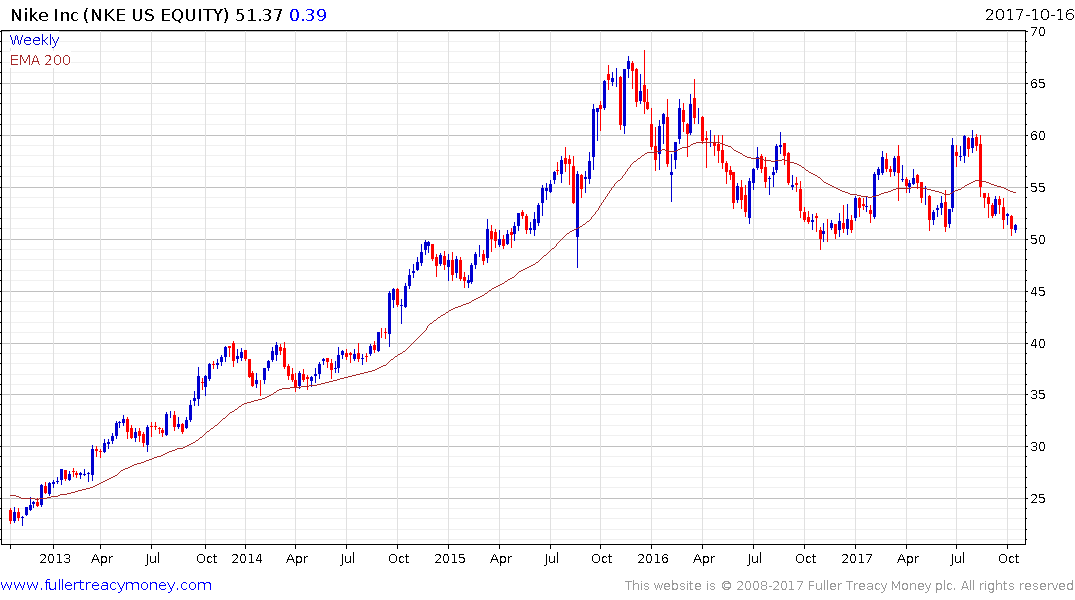Amazon to make sportswear push in industry-jolting move
This article by Lindsey Rupp and Daniela Wei for Bloomberg may be of interest to subscribers. Here is a section:
Amazon has developed its own brands in part because they fill gaps in its inventory. If customers are searching for a certain type of shoe or skirt, and don’t see much of a selection from established brands, Amazon wants to be able to offer its own options. Oftentimes, shoppers may not realize that the names -- such as Scout + Ro and North Eleven -- are owned by Amazon.
This also sends a message to brands reluctant to sell their full inventory on Amazon. If shoppers can’t find your products on the site, Amazon will make its own substitutes and become your competitor.
For suppliers like Eclat, forging alliances with e-commerce companies reflects shifting demand from consumers, Chiu said in a note.
“Online apparel sales accounted for 19 percent of all apparel sales in 2016, up from 11 percent in 2011,” Chiu said.
“Online sales are primed for strong growth.” Eclat expects new clients to contribute as much as 12 percent of 2018 sales, she said. The shipments to Amazon began in August, according to Chiu. “The contribution this year will be small, but the potential is high,” she said.
Amazon has a wealth of data about what people search for and can also cross reference that with what people in fact end up purchasing and returning. That puts it in an enviable position to design product lines around what people want rather than guessing what the next fashion forward idea is going to be.
This article from CB Insights also highlights the fact Amazon sees the traditional OEM manufacturing model as a stepping stone to custom manufacturing. It is inevitable that the market for custom tailored clothing will evolve as technology improves and margins for OEM clothing contract. I’ve written in the past about the robots pioneered by Softwear and the evolution in sewing machines. They represent the future of fashion retail where value will be in customizability and design while manufacturing will become commoditized to an even greater degree than it is today while simultaneously disrupting global logistics.

Amazon spent much of the last four months engaged in a process of mean reversion but has firmed over the last four weeks and is now trading back above the psychological $1000 level. A sustained move below the trend mean would be required to question medium-term scope for additional upside.

Nike has steadied in the region of the lower side of this year’s range but will need to sustain a move above $60 to confirm a return to demand dominance beyond the short term.


